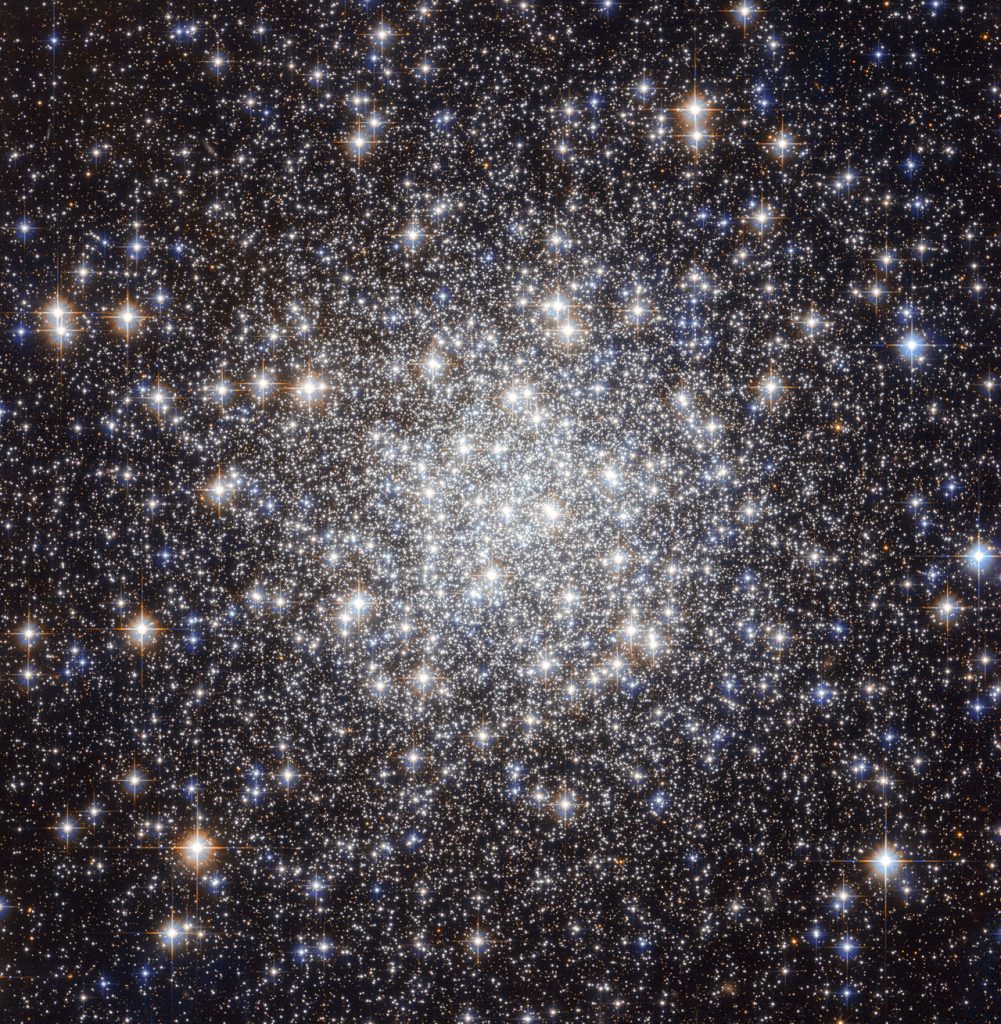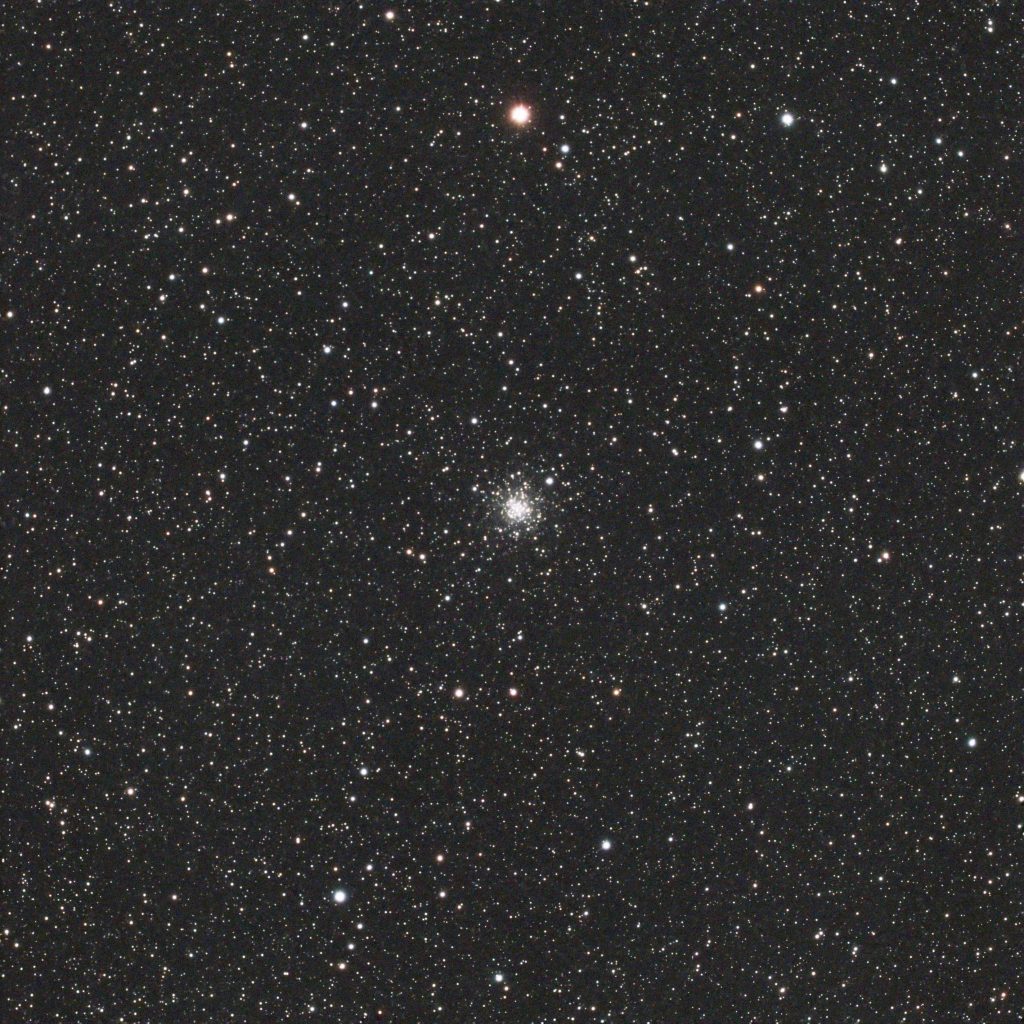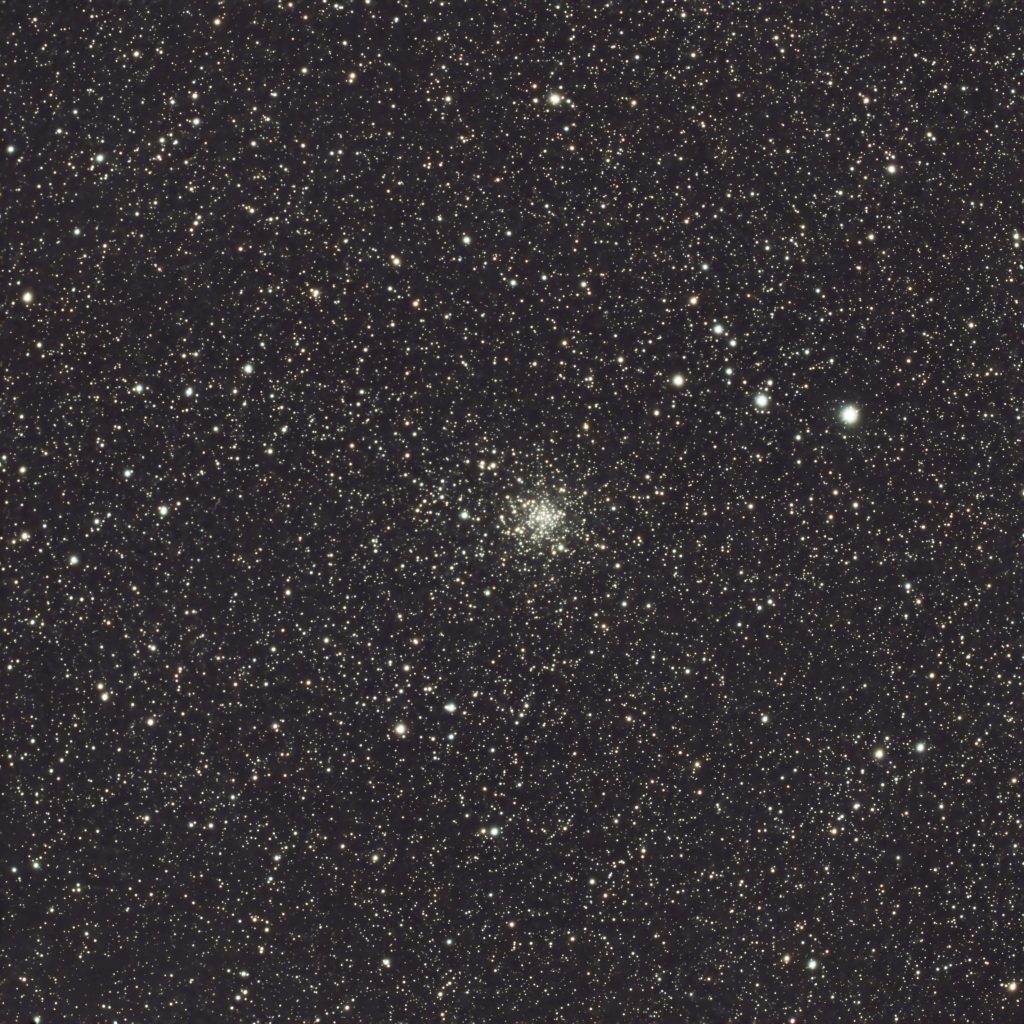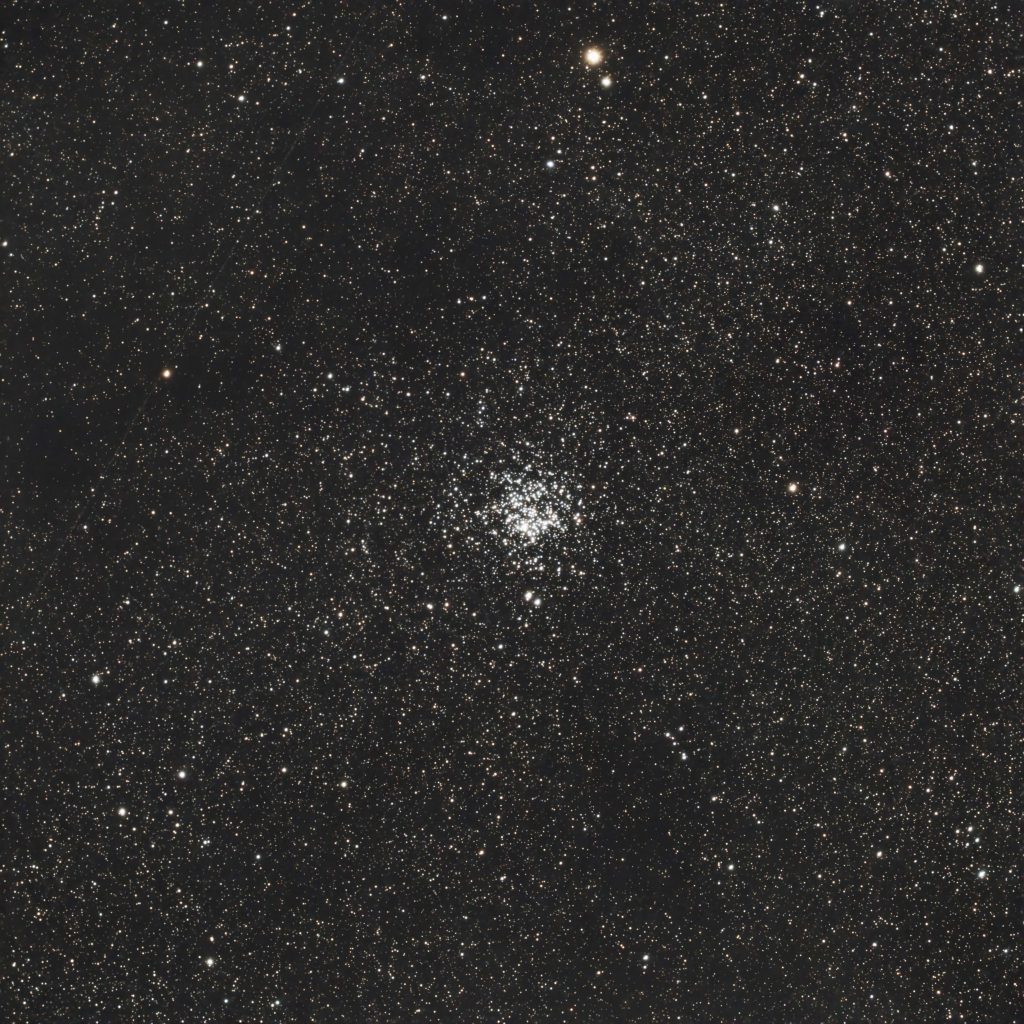
Colder weather moves in this time of year and not a leaf remains on the trees, but the longer nights mean that most of the stars of northern summer still linger. And so I found myself on a clear and chilly night in late October taking in some favorite star clusters along the spine of the Milky Way with a small refractor, while a second small scope and camera took snapshots of the same clusters.
In this month’s tour, let’s look at three of these star clusters, each in spectacular star fields. All come from the Messier list – one tight galactic cluster and two loose globulars. They make for pleasant visual inspection, and all serve as excellent targets for those of you taking snapshots of the sky with a little smart telescope like the Seestar 50 or with your own setup. I captured the live stacked images here with a 72mm refractor and ZWO 676MC camera (in case you were wondering). Each image has the same field of view, about 1 degree on an edge, which gives you a comparative view of these three clusters.
Messier 56
First let’s start with the globular cluster Messier 56 in Lyra. Charles Messier included the cluster on his famous list in 1779, noting it as “a nebula without stars”. And that’s just how this magnitude 8.3 cluster looks to modern stargazers visually with a small telescope. In an 85mm refractor, the cluster is a tiny amorphous blob amid a sparkling blanket of stars. At just 9’ across and 33,000 light years away, the cluster requires more aperture, more than 150mm, and a magnification well above 80x to 100x to resolve individual stars in its outer regions. While not a spectacular object, it’s location along the edge of the Milky Way makes it worth a visit. M56 lies on a line from the star Gamma Lyrae to Albireo, a little closer to the latter, and about half a degree southeast of a 6th magnitude red-orange star.

Sorting out which stars belong to the cluster and which are simply field stars troubles us amateur stargazers not at all, but professionals trying to understand the age and evolution of this little globular cluster have long been vexed by this problem. A recent study with the help of the Hubble Space Telescope placed the age of the cluster at about 13 billion years, typical for a globular cluster, and yielded the spectacular image above.
Messier 71 – The Angelfish Cluster
In 1780, Messier recorded another ‘nebulous blob’ on his list – what we now call Messier 71 in the constellation Sagitta. Neither he nor his contemporary Pierre Mechain could resolve it in their tiny telescopes, but in 1783 William Herschel, with his far better instruments, distinguished it as a cluster of faint stars.
It took some time for astronomers to sort its true nature. Some though it was a tightly packed open cluster of relatively young stars. Others believed it was a loose globular cluster somewhat like M56. Careful observation revealed the now-consensus view that M71 is indeed a globular cluster, one that’s relatively nearby at a distance of just 13,000 light years. At magnitude 8.2 and a size of 7’, it’s not terribly bright or large, especially compared to the grand globular M22 in Sagittarius which is only slightly closer. But it appears slightly more impressive than M56 and lies in an even richer field of the Milky Way.

Look for M71 just south of the line between gamma (Υ) and delta (δ) Sagittae, slightly closer to
gamma. In my 102mm refractor, the stars appear unresolved and there is a clear brightening towards the core at low power. Cranking it up to 100x or more resolves some stars in the halo. And my goodness, the field here is truly spectacular in dark sky. The cluster’s shape has been described as “arrow-like” or “Y-shaped”, and some catalogs and articles call it the “Angelfish Cluster”. I find this shape harder to see in photographs than visually.
M71 is different than most globulars because of its relative youth, only 9-10 billion years. Its stars also have a high concentration of ‘metals’ (elements heavier than hydrogen or helium) compared to most globular clusters, presumably because it formed when the universe was seeded with these elements by previous generations of stars. Want a better view of the cluster? Here’s one from HST…
Messier 11 – The Wild Duck Cluster
Let’s move southward along the Milky Way to the tail of Aquila and just northeast southeast of the star Beta Scuti to the stunning open star cluster Messier 11. No ‘amorphous blob, it’s the finest open cluster in this part of the sky and the favorite of many experienced stargazers.

Unlike many bright open clusters, M11 is quite compact, not unlike M71 for example, and requires substantial magnification to resolve. A three-inch telescope resolves some of its outer stars in a smoky haze that spreads across 1/5 of a degree of sky. Crank up magnification to 100x and above, and the cluster finally expands into a fan-shaped spray of dozens of white 9th and 10th-magnitude stars. British amateur stargazer William Smyth imagined M11 as a V-shaped configuration of stars that reminded him of wild ducks flying in formation. That’s why M11 is often called the “Wild Duck” cluster.
M11 is a distant cluster, nearly 5,500 light-years away and roughly 300 million years old, which is ancient for an open star cluster. Unlike many open star clusters, M11 has not yet been dispersed by passing stars and gas clouds because it’s massive enough to hold itself together through the mutual gravitational attraction of its constituent stars. Most of its 2000-3000 stars are luminous giants that shine much brighter than our own sun. From Earth, the stars in M11 are 9th to 11th magnitude. If our Sun lived in M11, it would appear as a barely-visible 16th-magnitude star.
Conversely, if you found yourself on a planet near the center of M11, you’d see a sky chock full of brilliant stars, more than 50 of which would range from 3 to 50 times brighter than Sirius, the brightest star in our sky.
As with M56 and M71, the Wild Duck lies in a spectacular field of stars, but one that’s less uniform because of dark fingers of interstellar dust in this part of the sky that obscure light from more distant stars. It’s a very fine part of the sky to explore.
And for now, that’s it for now. Next time, once the summer stars set for good this year, let’s explore star clusters along the northern Milky Way in Cepheus and Cassiopeia.
Share This: